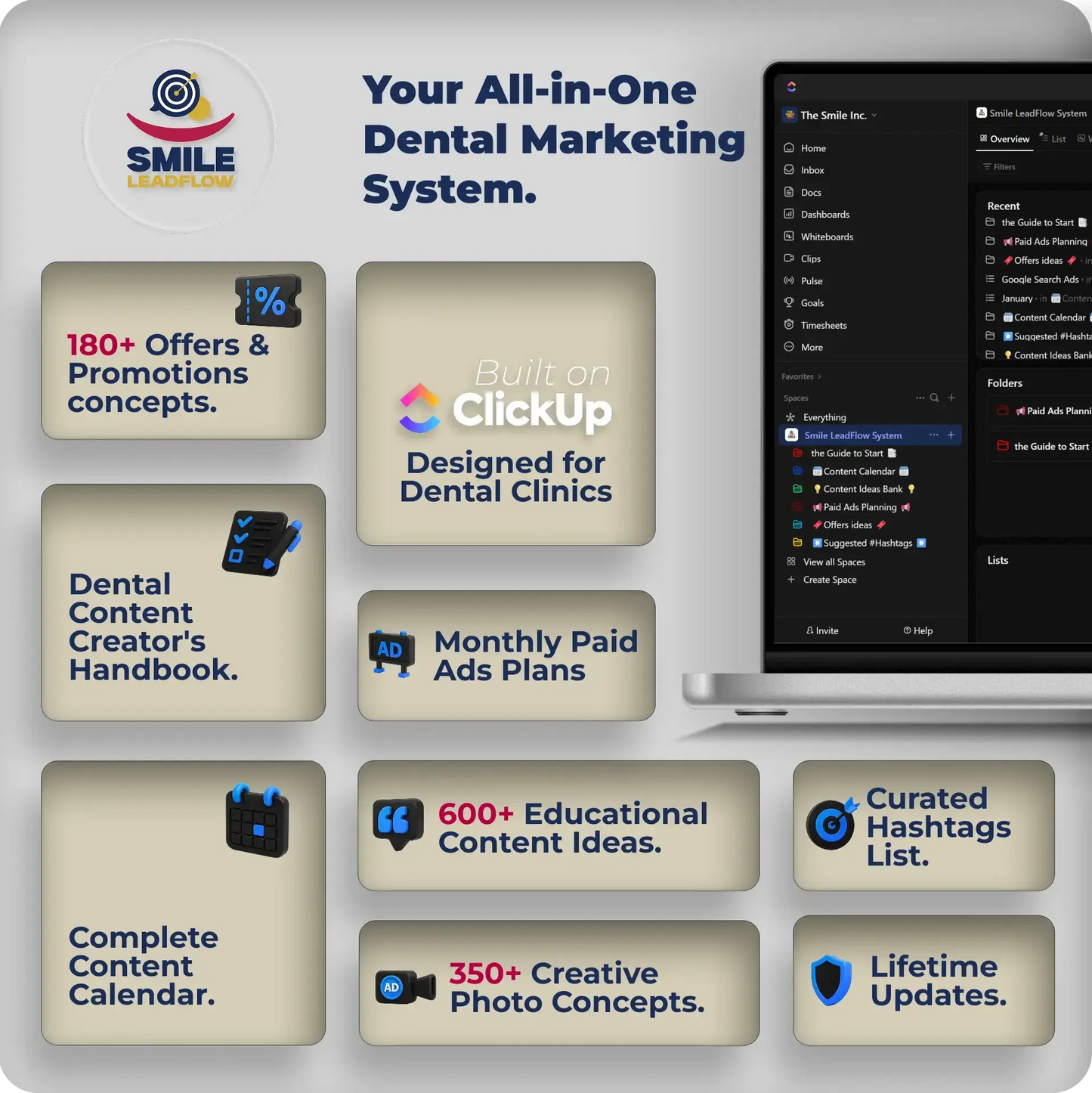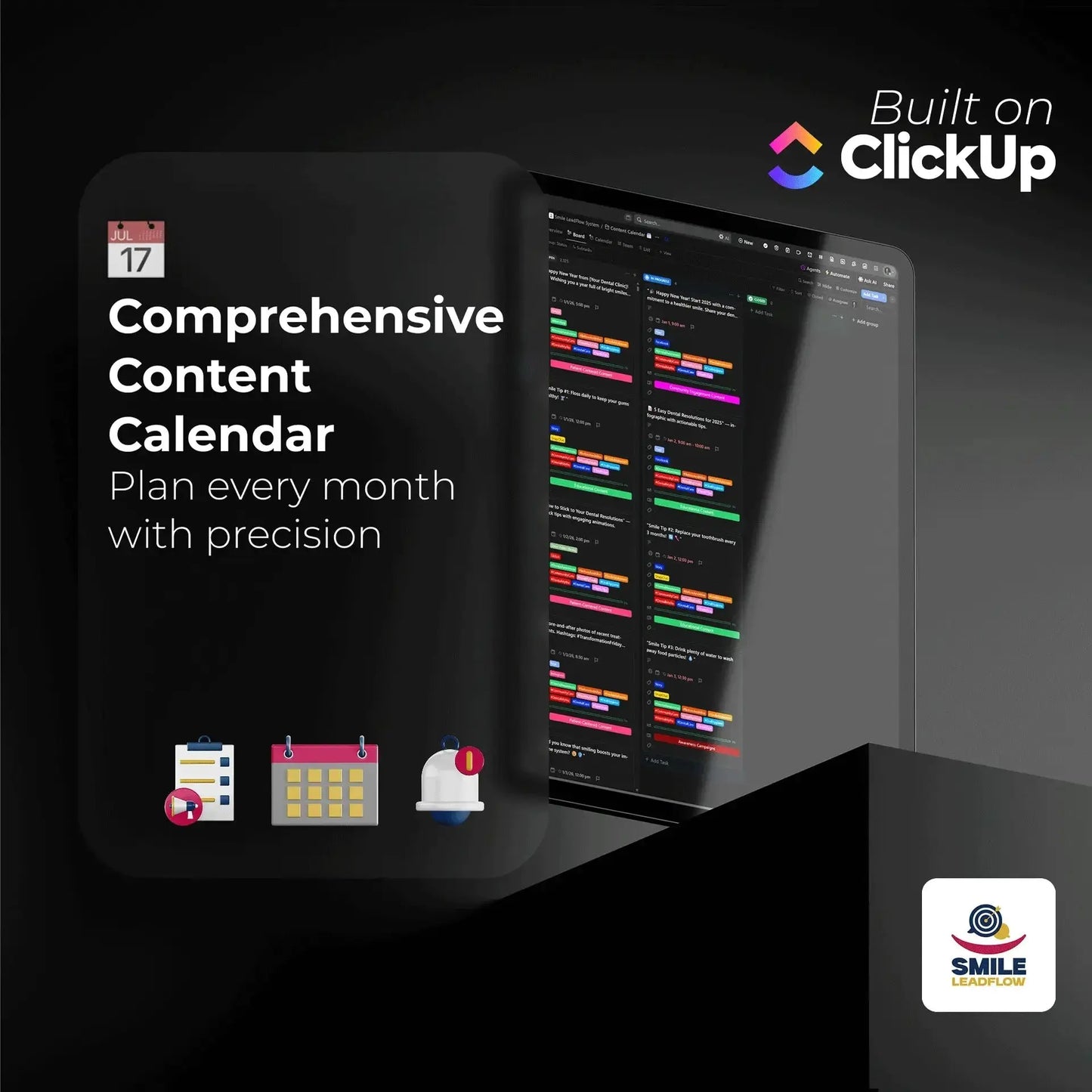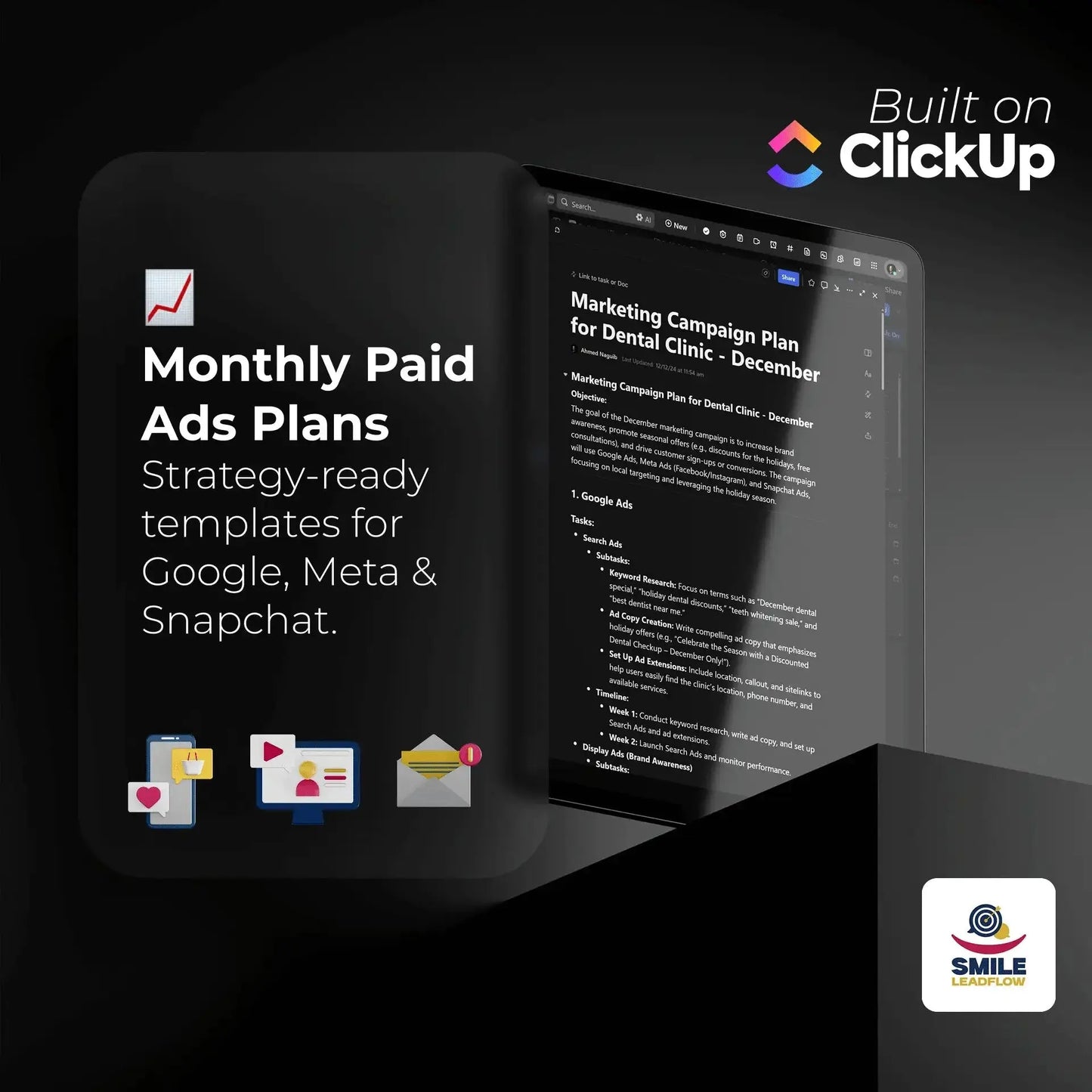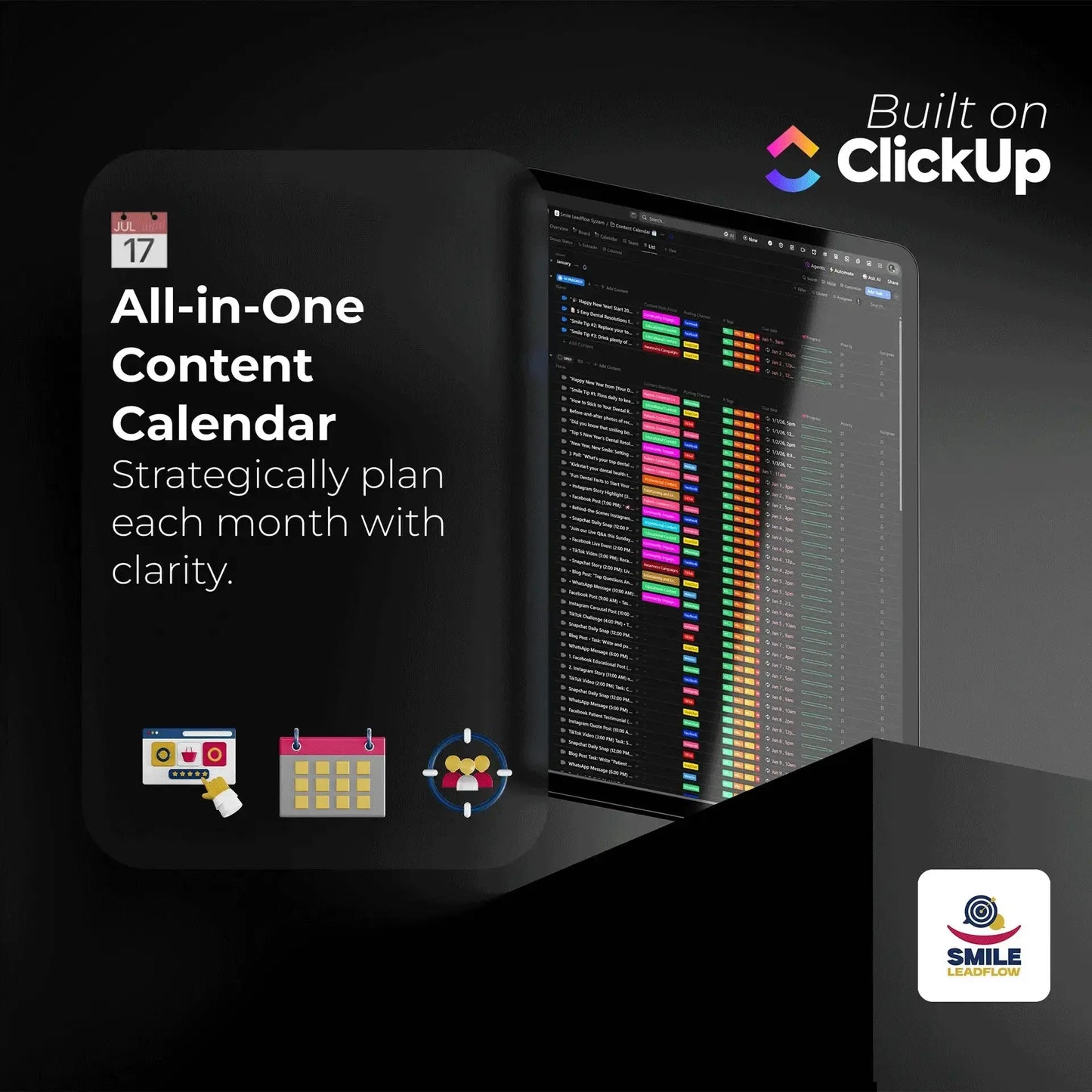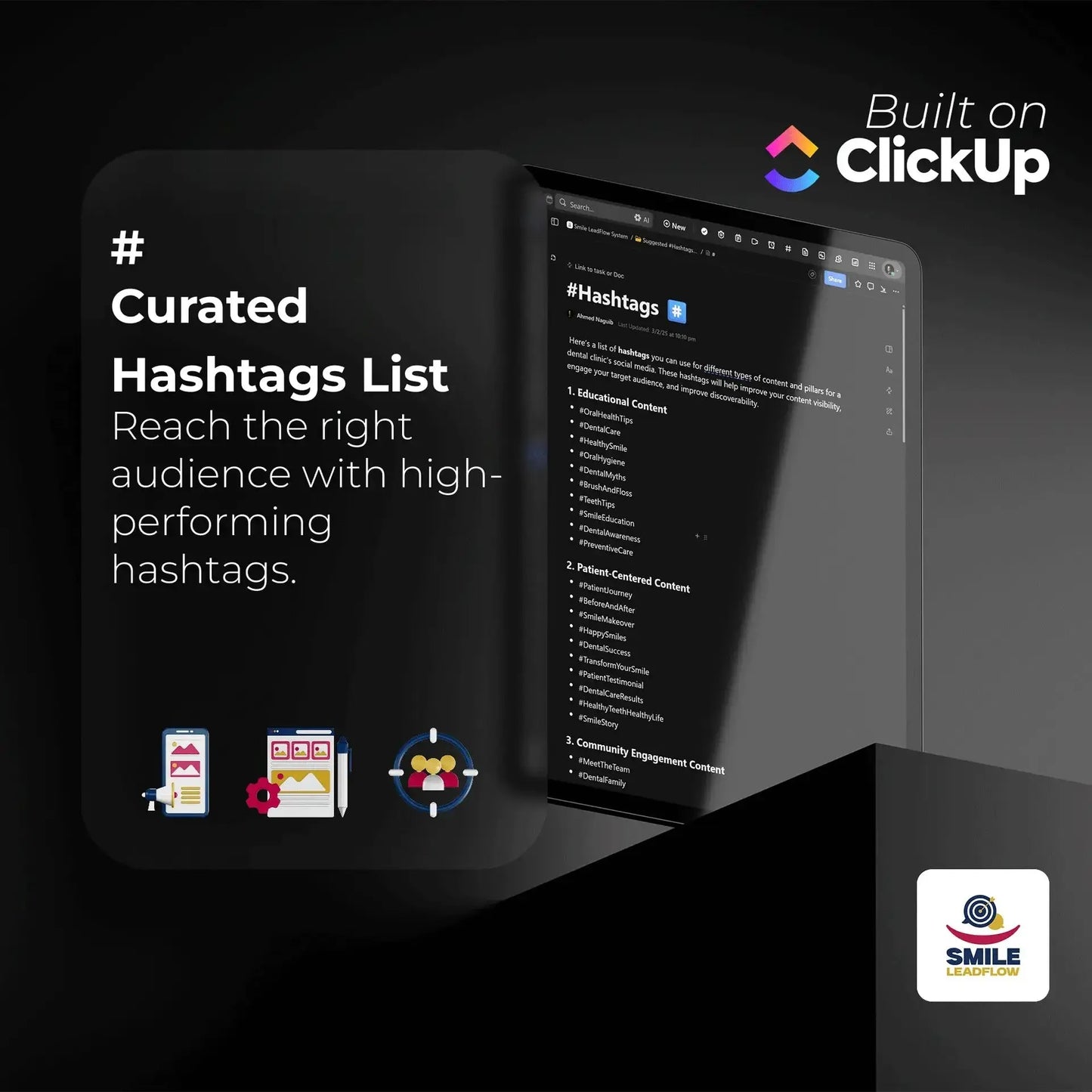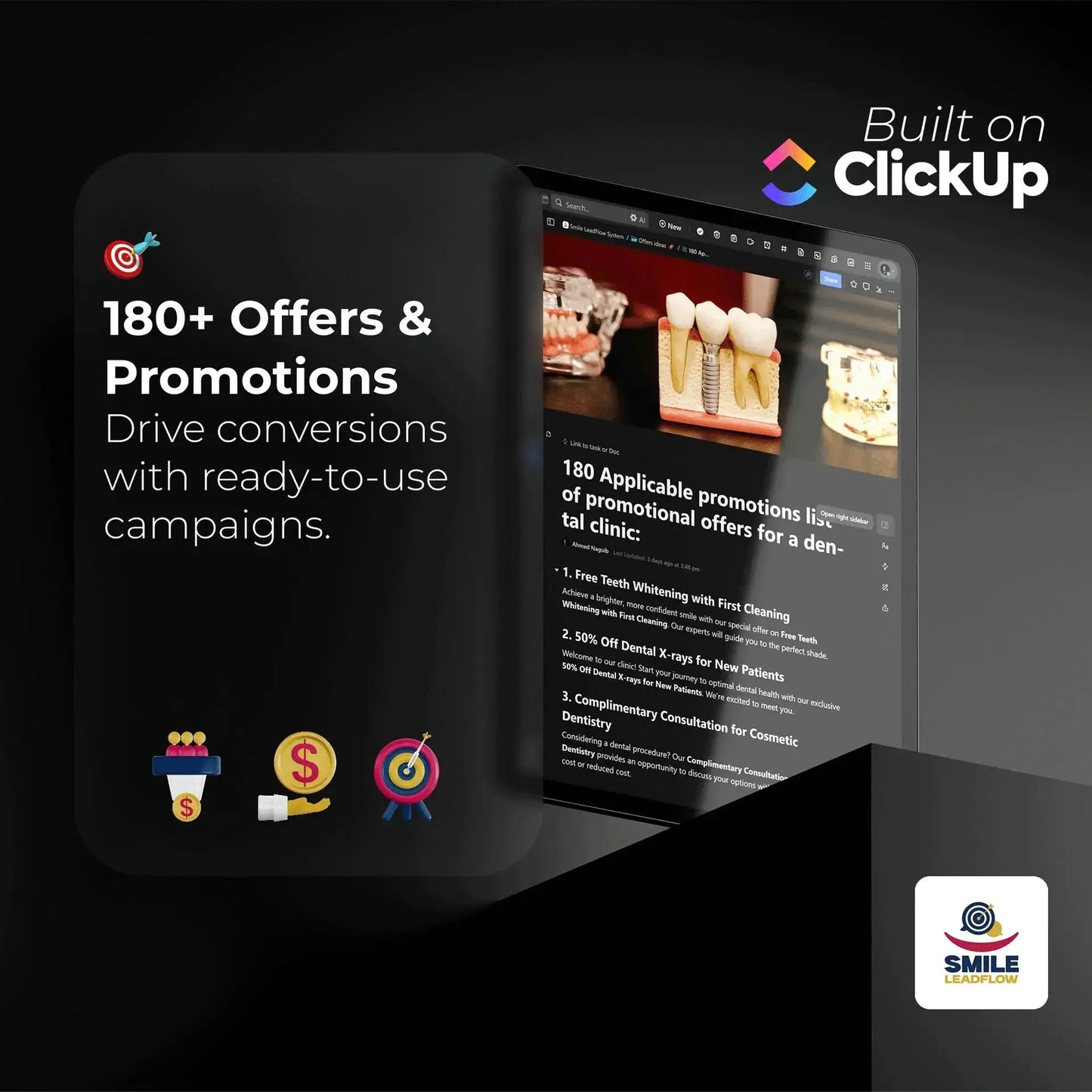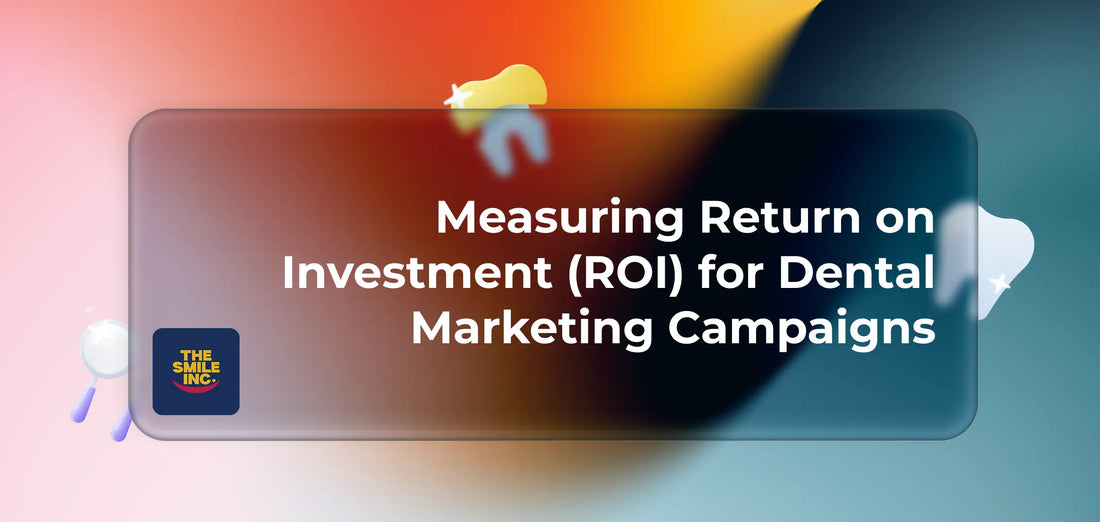
Measuring Return on Investment (ROI) for Dental Marketing Campaigns: A Comprehensive Guide
Ahmed NaguibShare
As a dentist, you're a master of oral health, but you're also a business owner. You spend your days focused on patient care—fillings, crowns, and cleanings—while the pressure to grow your practice and get more dental patients constantly looms. You're running ads, posting on social media, and trying to keep your website visible, but how do you know if any of it is truly paying off?
For instance, consider launching a Facebook campaign to promote a teeth-whitening special offer. It gets thousands of views and plenty of clicks, but at the end of the month, you've spent more than you made in new bookings. Without tracking your return on investment (ROI), your marketing efforts can feel like a shot in the dark.
This guide is designed to demystify dental clinic marketing for busy professionals like you. We’ll break down how to measure ROI in simple terms so you can make smart, data-driven decisions that grow your clinic with confidence. 🦷
What Is Marketing ROI? (And Why It Matters for Your Clinic)
Return on Investment (ROI) is a simple but powerful metric used to evaluate the profitability of a marketing campaign. It tells you exactly how much revenue you’re generating for every dollar you spend. Identifying your most effective marketing channels is a key benefit of understanding your ROI.
- ✅ Justify your marketing budget with clear data.
- ✅ Refine your strategies to maximize patient bookings.
The Basic ROI Formula
Calculating ROI is easier than you think. Here’s the standard formula:
ROI = Cost of Campaign (Revenue from Campaign − Cost of Campaign) × 1000
Let's break it down with an example:
- You spend $1,000 on a Google Ads campaign.
- You generate $5,000 in revenue from new patients who booked through those ads.
Using the formula
ROI=$1,000($5,000−$1,000)×100=400%
A 400% ROI means that for every $1 you spent, your clinic earned $4 back. Now that’s a winning campaign!
How to Market Your Dental Practice: Key Metrics to Track

To calculate ROI accurately, you need to track a few key pieces of information. Here are the core metrics every dentist should monitor for their marketing campaigns.
1.Revenue from New Patients
- What to Track: The total revenue generated from a specific marketing campaign.
- How to Measure: Utilize your CRM software to categorize new patients by their referral source, such as Google Ads or social media.
- Why It Matters: Revenue is the ultimate proof of success. It directly shows that your investment is generating profitable growth.
2. Total Cost of the Campaign
- Include all relevant costs: Be thorough in accounting for more than just your ad spend.
- Ad Spend: This includes the budget allocated for advertising on platforms like Google Ads and Facebook ads.
- Content Creation: Costs for designing graphics, recording videos, or writing blog posts.
- Agency or Freelancer Fees: Payments to any marketing partners.
- Software Subscriptions: Costs for email marketing tools or analytics software.
- Hidden Costs: Don't forget to account for the time your staff spends managing campaigns or handling new patient inquiries.
3. Lead Generation
- What to Track: A "lead" is a potential patient who has shown interest. Track the number of inquiries, contact form submissions, or phone calls from a campaign.
- How to Measure: Use tools like Google Analytics, social media insights, or your CRM to trace these interactions back to their source.
- Why It Matters: Leads are the first step in the patient journey. This metric tells you how well your campaign is capturing initial interest.
4. Conversion Rate
- The conversion rate is the percentage of leads that turn into actual patients by scheduling an appointment.
- The Formula:
- Why It Matters: A high conversion rate means your offer is compelling and your front-office team is doing a fantastic job turning inquiries into appointments.
Local Dental Marketing Tips: Measuring ROI Across Different Channels for Your Clinic
Wondering how to promote your dental clinic on specific platforms? Each channel requires a slightly different approach to tracking success.
Google Ads
Google Ads are ideal for reaching local patients who are actively seeking dental services in their area.
- How to Track: Use Google Ads' built-in conversion tracking to measure appointment form submissions and phone calls.
- Example ROI: A $2,000 Google Ads campaign brings in $8,000 in patient revenue.
- ROI = 300%
Social Media Marketing (Facebook & Instagram)
Social media is effective for increasing brand visibility and advertising cosmetic treatments such as teeth whitening.
- How to Track: Use the Meta Business Suite to monitor ad performance and track inquiries or bookings attributed to specific posts.
- Example ROI: You spend $500 boosting Facebook posts, resulting in $2,000 in bookings.
- ROI = 300%
Email Marketing
Email marketing is a budget-friendly method to maintain connections with your current patients and encourage repeat visits.
- How to Track: Your email platform (like Mailchimp) can track clicks and conversions from promotional emails.
- Example ROI: An email campaign costing $200 generates $1,500 in appointments for cleanings and checkups.
- ROI = 650%
Dentist SEO (Search Engine Optimization)
Dental website SEO aims to improve your website's visibility on Google search results over time, attracting more visitors organically.
- How to Track: Use Google Analytics to monitor traffic and conversions from organic search. This takes longer to show a return, so measure it over several months.
- Example ROI: You invest $1,000 in dentist SEO services, resulting in $6,000 in new patient revenue over six months.
- ROI = 500%
Common ROI Tracking Challenges (& How to Solve Them)
Tracking marketing ROI has its challenges. Here are a few common hurdles in dental marketing for beginners and how to overcome them.
- The Problem: Attribution. For instance, patients may encounter your clinic on social media, receive an email, and later search for you on Google before making an appointment. So, which channel gets the credit?
- The solution: Use multi-touch attribution models available in advanced analytics tools. At a minimum, always have your staff ask new patients, "How did you hear about us?"
- The Problem: Time Lag. Some strategies, like SEO or a referral program, take months to deliver results.
- The Solution: Be patient! Track the ROI for these long-term strategies over a 6-to-12-month period to see their true impact.
- The Problem: Offline Conversions. Many patients will still call your office or walk in.
- The Solution: Use call-tracking software such as CallRail to allocate a unique phone number to each marketing campaign. This way, you know exactly where your calls are coming from.
Conclusion: Your Personalized Roadmap to Smarter Dental Marketing
Measuring ROI is the most effective way to take control of your dental clinic marketing. By tracking your performance, you can stop wasting money on what doesn't work and double down on the strategies that do. The insights you gain are a roadmap to allocating your budget wisely, attracting more of the patients you want, and building a thriving, profitable practice. 📈
Your Next Step: Take Action!
Ready to put this into practice? Start small. Choose just one of your current marketing campaigns to analyze this week. Gather your cost and revenue data, calculate your return, and use that insight to make your next marketing decision a data-driven one. Every dollar counts—make sure yours is working for you!
References
- CallRail. (2023). Call Tracking Software.
- Google. (2023). Google Ads Help.
- HubSpot. (2023). CRM and Marketing Tools.
- Mailchimp. (2023). Email Marketing Campaigns.












